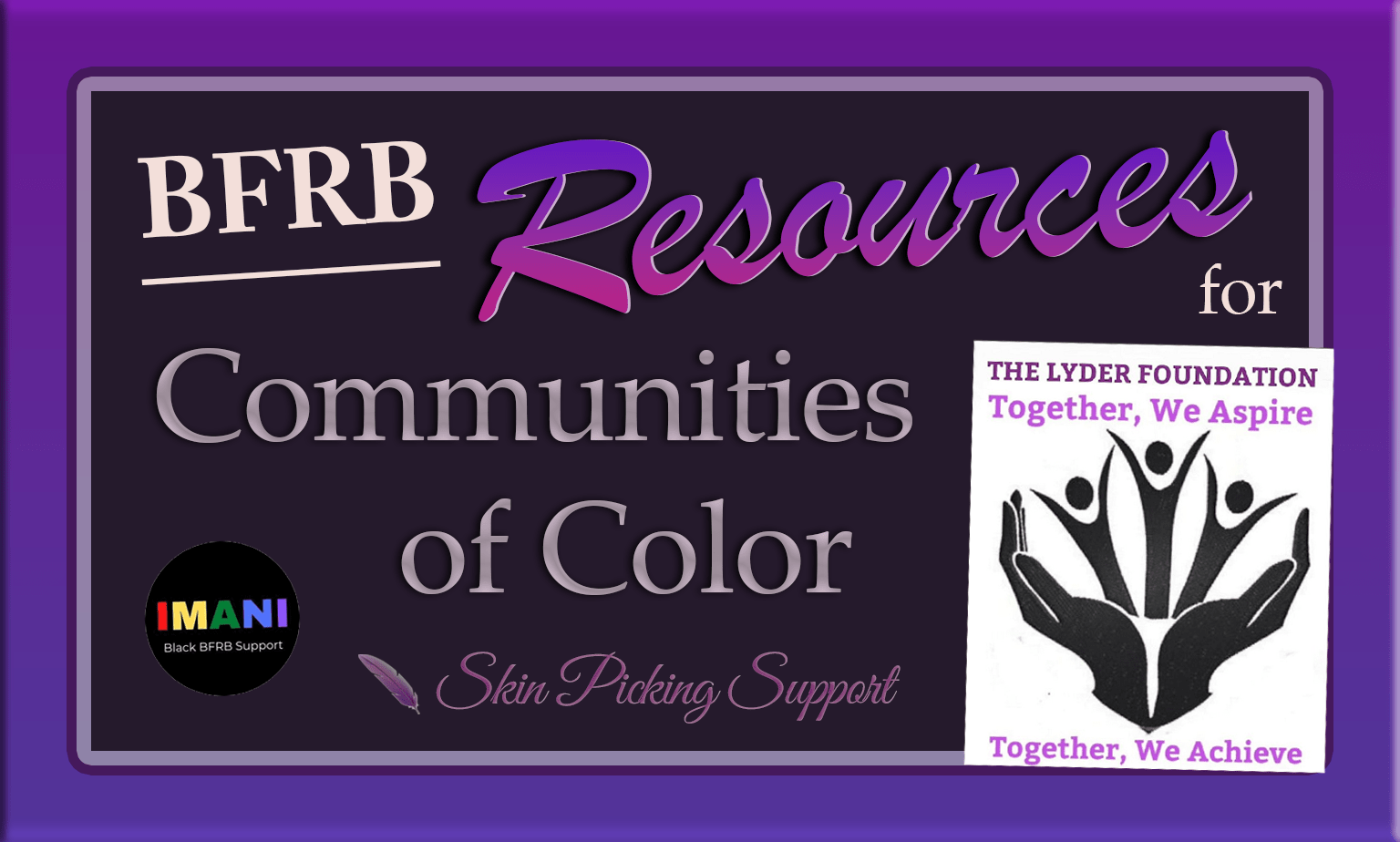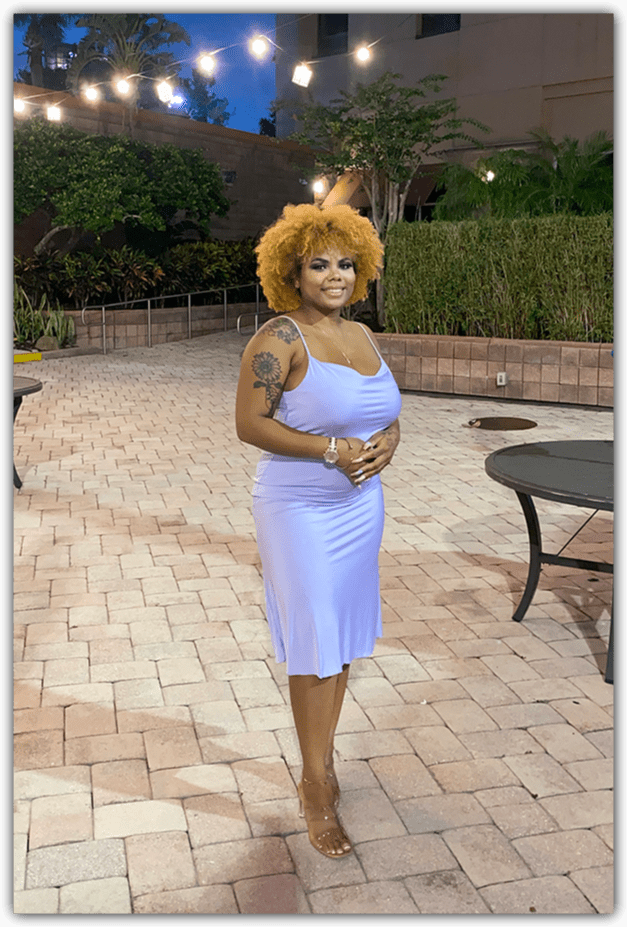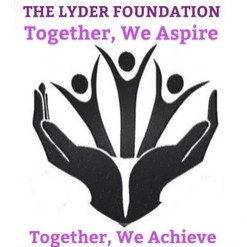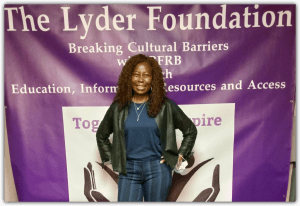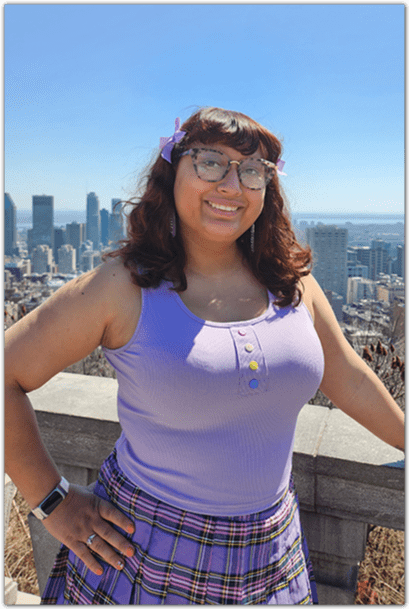Not all access to mental health resources is built equally.
And for people of color, access to resources for body-focused repetitive behaviors (BFRBs) does not come as easily as you might think or hope.
For the most part, even BFRB organizations and groups with a special focus on people of color have gotten a welcome and appreciative reception. People are glad to have a place that recognizes their unique struggles.
But others? Well, let’s just say, not everyone immediately understands the need for conversations and support for people of color who have BFRBs.
Mental Health Inequity
“A few people wondered why a space like this was needed,” says Saharra Dixon, co-founder of Imani BFRB.
Living with trichotillomania, she co-founded the group because she recognized the gap in resources for people of color, like herself.
She elaborates, “I often got push back because some people have a hard time wrapping their heads around how health disparity and mental health inequity function.”
In simple terms, mental health inequity means people of different communities and groups don’t have the same access to or even quality of care for mental health that other groups do. Similarly, disparity means they don’t receive the same level of treatment.
Cultural Barriers
Dixon touches on these concepts in a paper she co-wrote. In it, she highlights how black women face stigma both in their communities and from professionals that stops them from speaking out about mental health struggles.
Bianca Lyder, president and founder of The Lyder Foundation for BFRBs, also sees the cultural barriers stopping people of color from seeking help.
“Mental health was not a discussion among families particularly in previous generations that trickled down, therefore, preventing treatment when needed as well as other systemic barriers.”
The good news is mental health is becoming a more common topic in everyday society, even for people of color. One notable example is when shuffle dancer Kathryn Eaddy was invited on The Dr. Oz Show in 2019 to talk about her skin picking disorder.
In an interview with Feat. You, Eaddy goes into a little detail about being on the show, including how she didn’t think it would ever be something that happened to her. She even goes so far as to say that she thought, “I’m a hood rat, I shouldn’t be here.”
Luckily, it was an overall great experience that gave her access to treatment. She also liked seeing it represented on TV.
Racial Stigma
Despite that, not everyone has adopted that level of comfort with talking about these issues. Stigma, unfortunately, still exists, and it’s seen in many ways in non-white communities.
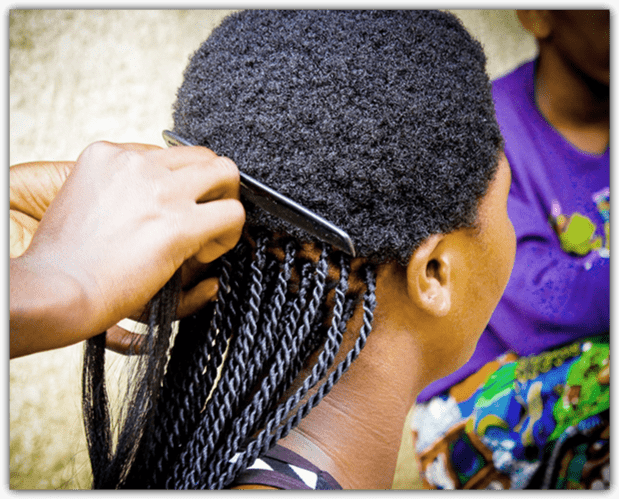
“Hair was a sacred cultural and spiritual symbol in ancient African societies” – Odele Beauty
For instance, Dixon touches on the notion of being a “strong black woman” making it challenging to be honest about struggles bubbling beneath the surface.
There’s also the part of the equation where skin and hair—two physical attributes directly affected by BFRBs—are tied to racial identity in the black community.
“Hair is often a very significant part of black culture,” says Gessie Perez, who developed trichotillomania around age 11.
“So for someone who may have hair loss as a result of trichotillomania, they may feel especially ashamed about their condition.”
Lyder’s profession as a cosmetologist specializing in hair loss has brought her many clients who’ve struggled with the likes of hair pulling disorder. Through her work with clients with trichotillomania for over 10 years and attending national conferences for BFRBs, she discovered she has a BFRB herself—skin picking disorder.
A Lack of Resources
It was the lack of resources and knowledge for how BFRBs impact people of color, she says, that encouraged her to start her foundation. Its mission is to not only advocate for people of color and support them, but also to identify the barriers, including socio-economic barriers, that prevent them from accessing information and resources for BFRBs.
By recruiting a team of professionals that know both BFRBs and the challenges that face people of color, The Lyder Foundation for BFRBs aims to make resources and information available to those communities from within those communities. In doing so, they can directly squash stigma and address the discrimination they face.
For her part, Dixon didn’t realize just how prevalent that lack of knowledge and resources was until she sought therapy.
As she combed through the resources already available, one thing became pretty clear.
“A lot of the tools, resources, and information available were geared towards white people.”
It inspired her to help create a space where she and people like her could explore how their rich, diverse backgrounds both impacted these disordered grooming behaviours and could lead people to support and treatment.

Kwanzaa: a celebration of African American culture from Dec. 26 to Jan. 1.
“Imani is from the Swahili meaning ‘faith’ or ‘belief,’” she shares. “In the Kwanzaa tradition, it means to believe with all of our hearts in our people and the righteousness and victory of our struggle as folks of the African diaspora.”
She says her co-founder, Tamarra Parsons, was the one who thought of it as a metaphor for their group when it first started, and since 2021, it’s stuck.
Perez, now programs director and social media manager for The Lyder Foundation for BFRBs, also recognized the lack of diversity in existing BFRB organizations when she discovered them a decade ago.
“When I first started attending events such as annual conferences, I did take notice that I was somewhat of a minority as a person of color, but fortunately it didn’t bother me much.”
While the lack of diversity existed, it was relief enough to know she wasn’t the only one in the world pulling out her hair. And, as time went on, she says the organizations became more diverse.
Making Space in the BFRB Community
So how do we, the BFRB community as a whole, continue to solve this problem of mental health resources for people of color?
The first step is recognizing the BFRB resources and efforts can’t—and shouldn’t—be one-size fits all.
It might be easier to see that in terms of differences in finances. But we need to also understand that different groups of people face different cultural and societal expectations and challenges.
Next, it’s by actively making space for and raising those voices.
In the BFRB community, opening up about our struggles has often been synonymous with many levels of healing. That’s why we see groups like Skin Picking Support and countless social media posts where people bare their souls.
Having the opportunity to speak where we once felt silenced is key to not only lightening the load we carry, but also is taking back our narrative, how others see us, and, most importantly, how we see ourselves.
Making space for people of color, whose stories may be similar but not look exactly like ours, is the next step, and Dixon agrees.
In her paper, she talks about C.N.I., or Critical Narrative Intervention, which puts emphasis on individual stories to understand lived experiences and barriers.
In the same way, it’s taking back ownership and control of personal narratives.
Imani BFRB’s co-founder says just sharing her own story and the stories of her friends with BFRBs has started to reshape the way they talk about mental health inequity and has changed lives.
She encourages others to use their stories, too.
“There is medicine in your story. Whether you write it down just for you, or share it with the world, you’ll be surprised what small little nuggets you find,” Dixon says.
“You have to trust it. There is power and liberation in your story, and don’t let anybody tell you otherwise.”
Contact Information
Founder/President of The Lyder Foundation for BFRBs, Lyder Enterprises, Inc, and New Horizons Hair, Bianca was born in Trinidad and moved to the United States at age 12. She brings her Caribbean roots and American sense of style to her work as a cosmetologist. She served as a co-chair on the TLC Foundation for BFRBs Diversity Board and has a strong belief in education.
Gessie Perez has had trichotillomania since age 11. She serves as a board member, programs director, and social media manager for The Lyder Foundation for BFRBs. She describes herself as a passionate advocate for BFRBs and is also a published author of the memoir Triumphant Trichster and children’s book A Trichy Situation. She loves traveling and relaxing at home with her dogs.
Saharra Dixon MA, CHES is an experienced public health professional, qualitative and arts-based researcher, as well as a community-engaged theatre artist and digital storyteller passionate health equity. As a practitioner, she works with diverse communities in using art as a tool for reflection, transformation, and radical healing. As a researcher, she explores the impact of art, arts participation and cultural engagement on health and health research.
Dixon SL, Isaac M. No One-Size-Fits-All: Critical Narrative Intervention and Archeology of Self as Anti-Racist and Anti-Colonial Practices in Body-Focused Repetitive Behaviors. Health Education & Behavior. 2023;50(4):508-516. doi:10.1177/10901981231177081
